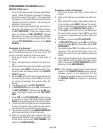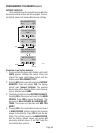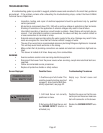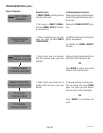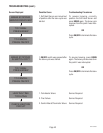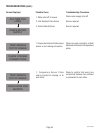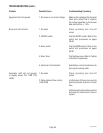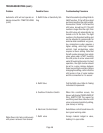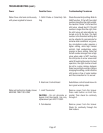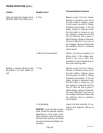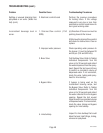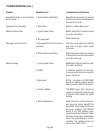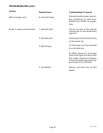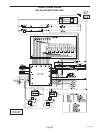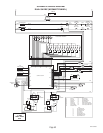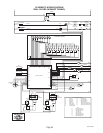Page 48
TROUBLESHOOTING (cont.)
Problem
Possible Cause
Troubleshooting Procedures
Remove power from the brewer.
Connect a voltmeter across one of
the tank heaters. Reapply power
to the brewer and refer to Testing
Individual Components. If the full
supply voltage is measured when
the tank heater is turned on, and
zero voltage is measured with the
triac off, then the triac is good. If
half the supply voltage is measured,
the triac is defective. If very low, or
zero voltage is measured, there could
be a defective triac or a defective
control board.
Perform the above procedure for
testing triacs. If the voltage mea-
sured is very low or zero, then
substitute a control board known to
be in good working order.
Remove power from the brewer.
Connect a voltmeter across one of
the tank heaters. Reapply power
to the brewer and refer to Testing
Individual Components. If the full
supply voltage is measured when
the tank heater is turned on, and
zero voltage is measured with the
triac off, then the triac is good. If
half the supply voltage is measured,
the triac is defective. If very low, or
zero voltage is measured, there could
be a defective triac or a defective
control board.
Inspect the tank assembly for ex-
cessive lime deposits. Delime as
required.
3. Triac
4. Electronic Control Board
1. Triac
2. Lime Buildup
CAUTION - Tank and tank compo-
nents should be delimed regularly
depending on local water condi-
tions. Excessive mineral buildup on
stainless steel surfaces can initiate
corrosive reactions resulting in seri-
ous leaks.
Water will not heat or display shows
HEATING TIME TOO LONG (cont.)
Spitting or unusual steaming from
sprayhead or air vents. (Water too
hot)
29877-3 062005



